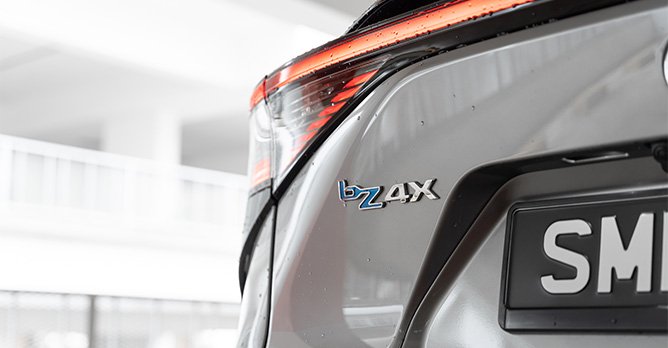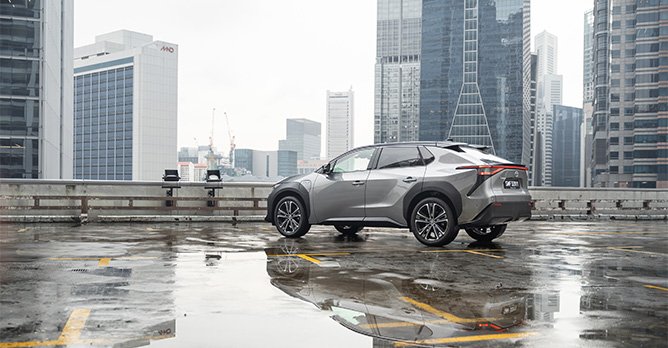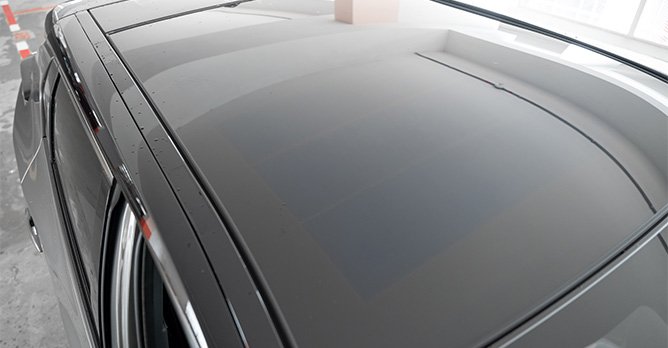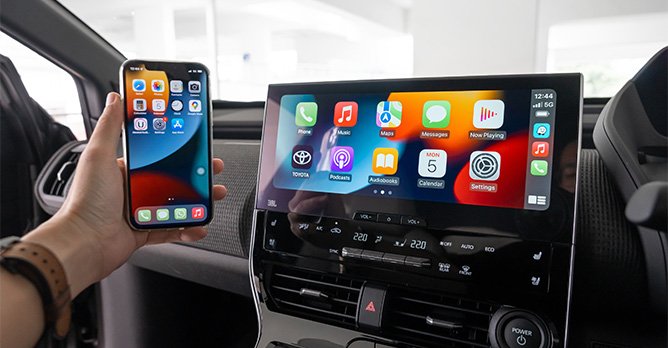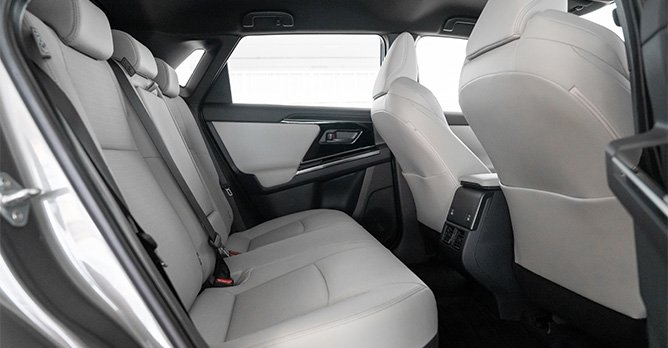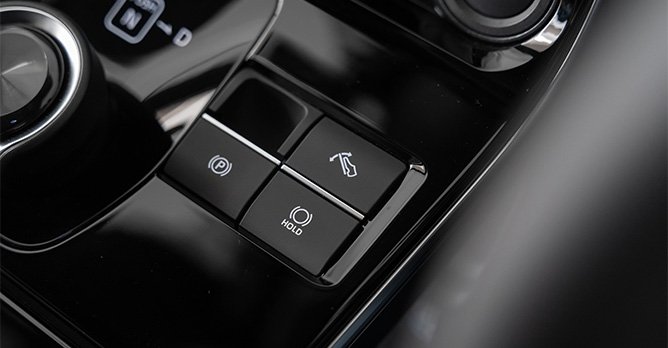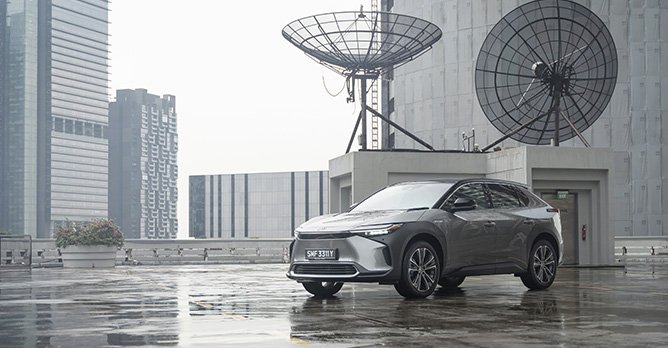Toyota bZ4X 71.4kWh (A) Review
10 Dec 2022|46,176 views
What We Like
Sharp looks (when in this Heavy Metal paintwork)
Spacious cabin
Pleasant dash design
Decently fun on the road
Promises standard-fare Toyota reliability with impressive battery-capacity retention (theoretically)
What We Dislike
Range and performance not outstanding by modern EV standards
Toyota will tell you it's always been a strong proponent of electrification. In fact, the company will even say that it's been its longest fan.
But all this applies, of course, to the fact that the automaker has been the leader in petrol-electric drivetrains since the 1997 debut of the first-generation Toyota Prius. In 2014, the Toyota Mirai even introduced hydrogen fuel cells into the mass market.
For better or worse, that interpretation may not suffice for much longer today.
And the bZ4X - not just the torchbearer of the beyond Zero model series, but Toyota's first-ever dedicated battery-electric vehicle (BEV) - is proof that the company knows it.
One for the money: Not too otherworldly
For those that may not know better, a passing glance is unlikely to single this out as the turning point towards Toyota's zero-emissions future.
'4' refers to its mid-sized positioning, while 'X' references it being a crossover. The bZ4X's resulting form from these two identities would easily slip it alongside the Harrier or RAV4 as another one of the firm's SUVs - except for it (thankfully) bucking the trend of tacking a fake grille up front.
That's really no slight to its design. Its hammerhead shark-inspired face and hooded-eye head lights look sleek and flow nicely into its angular side profile, which then connects seamlessly with the flurry of trapezoidal shapes at its rear. In another colour, the bZ4X may not wear the matte black of its massive fenders so well, but the contrast is far more pleasing than jarring in this Heavy Metal paintwork.
The two-tone combination also helps disguise a novel feature the crossover carries on its roof: Solar panels, which Toyota says will generate up to 1,650km of additional range annually (in practice this should be reflected in lower energy consumption figures).
Finally, pictures may betray its medium-segment positioning, but the SUV is a good 90mm longer than a RAV4. With its size more perceptible in person (those alloys are 20-inches!), the muscular, off-roader-esque look it reaches for actually works.
Two for the show: Stepping in
The story of familiarity continues when you step inside the car.
Nothing particularly avant-garde yells for your attention here, where everything still looks unmistakably Toyota-like. This is in spite of the bZ4X debuting a fresh dash that furthers the suggestion that the carmaker has been taking more interior-design notes.
Courtesy of the expanse of digital real estate, fabric surfaces, and an uncluttered floating centre console (which hides its wireless charging tray away with a novel, partially see-through cover), a light but genuine feast for the eyes awaits. You'll find a nicely weighted swivel knob for a gear selector too.
At the same time, fans of physical buttons can also rejoice in the fact that they have been dotted around in abundance. Those beneath the snappy and crisp 12.3-inch infotainment screen are particularly satisfying to operate. (Note: The car's sat-nav wasn't fully operational when we had the car, likely due to its unusual launch here. More on that later.)
Perhaps the only unusual bit is the elevated placement of the 7.0-inch digital driver's display, which feels fittingly modern and is intuitive to read, but means slight compromises are inevitable - either for full visibility of the screen, or your ideal steering wheel adjustment.
With ventilated seats (featuring automatic fan speeds) and a nine-speaker JBL sound system included in its equipment list, the bZ4X also feels more upmarket than previous Toyota SUVs. Still, most important inside is the practical benefit from its dedicated e-TNGA platform: Sheer space.
A 2,850mm wheelbase translates into legroom that will more than satisfy even 1.8 metre-tall passengers and while headroom is not nearly as generous, is still very commendable.
Three to make ready: For the switch from combustion engines
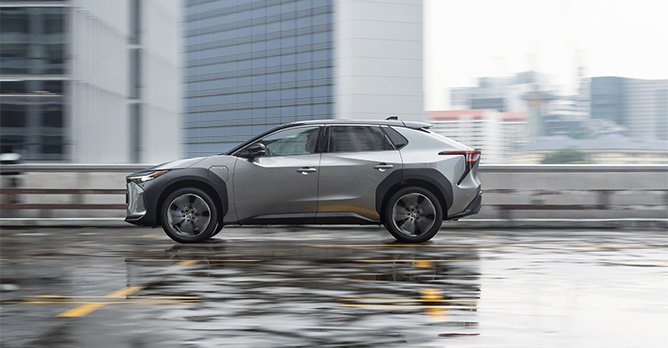
Perhaps surprisingly, the bZ4X deftly masks both its crossover dimensions and 1.9 tonne kerb weight on the move.
With its batteries integrated into its structure, its enhanced body rigidity works with a suspension set-up that isn't overly soft-sprung to give it an impressive sense of plantedness. Nevertheless, the bZ4X still manages a settled ride, and fends off undulations capably.
It feels fair to say, however, that the extent of one's enjoyment when piloting the car will also hinge on the extent to which they've bought into the full-blown EV experience.
For starters, its performance is squarely in the middle of the current electric field. EV-converts are also likely to lament the fact that there are only two levels of regenerative-braking. By default, the car as good as coasts when you lift off, and even the higher setting doesn't fully enable one-pedal driving.
Instead, where all camps will agree on is with the bZ4X's strengths as a cruiser. A wide and low windscreen provides a good view out onto the road, and the unnatural quiet within the cabin even at high speeds speaks for the remarkable level of insulation endowed by its acoustic glass.
4 to make go: Towards market dominance?
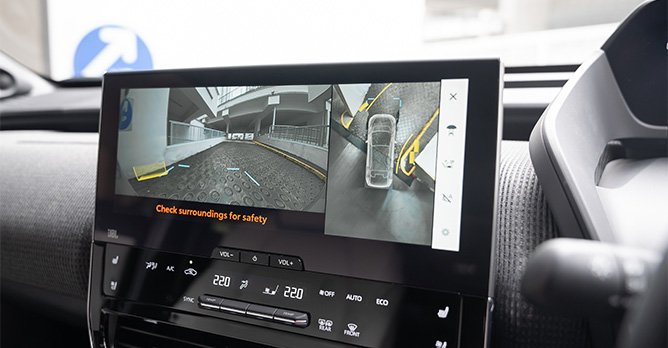
Rather, it excels in being exceedingly approachable - from the very moment you set your eyes on its sheet metal, to the point you're flooring the accelerator and silently cutting through traffic with a relaxed smile - while flirting on the periphery with novelty.
To address its range finally, the crossover's 71.4kWh battery gives it a WLTP-rated 436km on a single charge, although our driving patterns would have returned something closer to 380km.
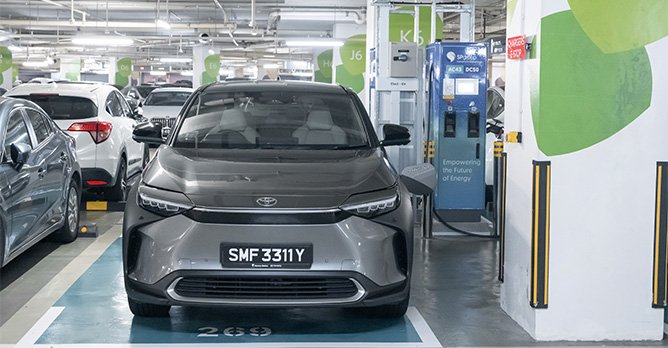
There's also one glaring area that we've left out thus far. With current COE premiums, an eyebrow-raising price range between $250,000 to $260,000 has been estimated for the car, but you wouldn't be able to pay for it anyway; it's been slated exclusively for a new EV leasing-cum-sharing program in the Tengah estate, come June 2023.
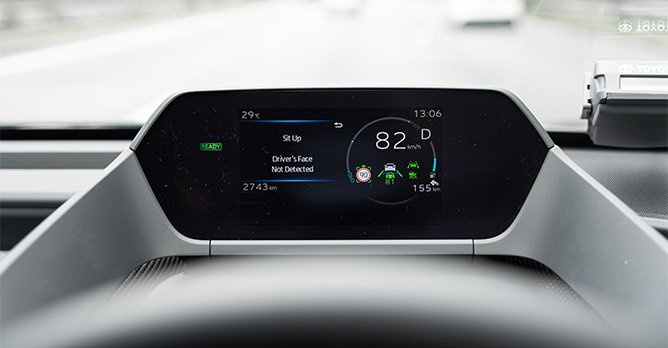
Yet with its good-enough but non-cutting-edge on-paper figures and unconventional release, one cannot help but feel that barriers to its widespread adoption surround it from multiple fronts now.
Nonetheless, the car's Japanese market launch may hold some clues that help explain its befuddling roll-out in Singapore. The car is also exclusively available via lease there, and according to Toyota, has been given such treatment to "eliminate customer concerns regarding residual battery performance, BEV maintenance, and residual value".
This bit is crucial if we want to consider what the bZ4X means as a model holistically - especially after Toyota has already claimed a class-leading 90% battery capacity retention ratio for the car. Above all else, it appears Toyota wants the bZ4X to do what a Toyota does best: Stand the test of time.
Whether leasing ultimately flies in a country not traditionally warm to it like ours remains to be seen. However, if we understand the bZ4X not just as an electric SUV with traditional Toyota strengths - comfortable, spacious, efficient and decently dynamic - but also as a bearer of the promise of reliability, its appeal might just shine through even more clearly.
After all, aren't those the qualities we all look up to Toyota for?
In the meantime, here are a few other bespoke EVs you'll find in our market today!
The visually striking Kia EV6 is both a polished flagship, and a resounding success as Kia's first bespoke EV
The handsome and understated Polestar 2 hits all the right (silent) notes for electric motoring
Electrifying performance aside, the Volvo C40's intuitiveness is what will speak most strongly to drivers
The whimsical but well-specced and highly practical Atto 3 is a promising taster of what's next for BYD
What We Like
Sharp looks (when in this Heavy Metal paintwork)
Spacious cabin
Pleasant dash design
Decently fun on the road
Promises standard-fare Toyota reliability with impressive battery-capacity retention (theoretically)
What We Dislike
Range and performance not outstanding by modern EV standards
Toyota will tell you it's always been a strong proponent of electrification. In fact, the company will even say that it's been its longest fan.
But all this applies, of course, to the fact that the automaker has been the leader in petrol-electric drivetrains since the 1997 debut of the first-generation Toyota Prius. In 2014, the Toyota Mirai even introduced hydrogen fuel cells into the mass market.
For better or worse, that interpretation may not suffice for much longer today.
And the bZ4X - not just the torchbearer of the beyond Zero model series, but Toyota's first-ever dedicated battery-electric vehicle (BEV) - is proof that the company knows it.
One for the money: Not too otherworldly
For those that may not know better, a passing glance is unlikely to single this out as the turning point towards Toyota's zero-emissions future.
'4' refers to its mid-sized positioning, while 'X' references it being a crossover. The bZ4X's resulting form from these two identities would easily slip it alongside the Harrier or RAV4 as another one of the firm's SUVs - except for it (thankfully) bucking the trend of tacking a fake grille up front.
That's really no slight to its design. Its hammerhead shark-inspired face and hooded-eye head lights look sleek and flow nicely into its angular side profile, which then connects seamlessly with the flurry of trapezoidal shapes at its rear. In another colour, the bZ4X may not wear the matte black of its massive fenders so well, but the contrast is far more pleasing than jarring in this Heavy Metal paintwork.
The two-tone combination also helps disguise a novel feature the crossover carries on its roof: Solar panels, which Toyota says will generate up to 1,650km of additional range annually (in practice this should be reflected in lower energy consumption figures).
Finally, pictures may betray its medium-segment positioning, but the SUV is a good 90mm longer than a RAV4. With its size more perceptible in person (those alloys are 20-inches!), the muscular, off-roader-esque look it reaches for actually works.
Two for the show: Stepping in
The story of familiarity continues when you step inside the car.
Nothing particularly avant-garde yells for your attention here, where everything still looks unmistakably Toyota-like. This is in spite of the bZ4X debuting a fresh dash that furthers the suggestion that the carmaker has been taking more interior-design notes.
Courtesy of the expanse of digital real estate, fabric surfaces, and an uncluttered floating centre console (which hides its wireless charging tray away with a novel, partially see-through cover), a light but genuine feast for the eyes awaits. You'll find a nicely weighted swivel knob for a gear selector too.
At the same time, fans of physical buttons can also rejoice in the fact that they have been dotted around in abundance. Those beneath the snappy and crisp 12.3-inch infotainment screen are particularly satisfying to operate. (Note: The car's sat-nav wasn't fully operational when we had the car, likely due to its unusual launch here. More on that later.)
Perhaps the only unusual bit is the elevated placement of the 7.0-inch digital driver's display, which feels fittingly modern and is intuitive to read, but means slight compromises are inevitable - either for full visibility of the screen, or your ideal steering wheel adjustment.
With ventilated seats (featuring automatic fan speeds) and a nine-speaker JBL sound system included in its equipment list, the bZ4X also feels more upmarket than previous Toyota SUVs. Still, most important inside is the practical benefit from its dedicated e-TNGA platform: Sheer space.
A 2,850mm wheelbase translates into legroom that will more than satisfy even 1.8 metre-tall passengers and while headroom is not nearly as generous, is still very commendable.
Three to make ready: For the switch from combustion engines

Perhaps surprisingly, the bZ4X deftly masks both its crossover dimensions and 1.9 tonne kerb weight on the move.
With its batteries integrated into its structure, its enhanced body rigidity works with a suspension set-up that isn't overly soft-sprung to give it an impressive sense of plantedness. Nevertheless, the bZ4X still manages a settled ride, and fends off undulations capably.
It feels fair to say, however, that the extent of one's enjoyment when piloting the car will also hinge on the extent to which they've bought into the full-blown EV experience.
For starters, its performance is squarely in the middle of the current electric field. EV-converts are also likely to lament the fact that there are only two levels of regenerative-braking. By default, the car as good as coasts when you lift off, and even the higher setting doesn't fully enable one-pedal driving.
Instead, where all camps will agree on is with the bZ4X's strengths as a cruiser. A wide and low windscreen provides a good view out onto the road, and the unnatural quiet within the cabin even at high speeds speaks for the remarkable level of insulation endowed by its acoustic glass.
4 to make go: Towards market dominance?

Rather, it excels in being exceedingly approachable - from the very moment you set your eyes on its sheet metal, to the point you're flooring the accelerator and silently cutting through traffic with a relaxed smile - while flirting on the periphery with novelty.
To address its range finally, the crossover's 71.4kWh battery gives it a WLTP-rated 436km on a single charge, although our driving patterns would have returned something closer to 380km.

There's also one glaring area that we've left out thus far. With current COE premiums, an eyebrow-raising price range between $250,000 to $260,000 has been estimated for the car, but you wouldn't be able to pay for it anyway; it's been slated exclusively for a new EV leasing-cum-sharing program in the Tengah estate, come June 2023.

Yet with its good-enough but non-cutting-edge on-paper figures and unconventional release, one cannot help but feel that barriers to its widespread adoption surround it from multiple fronts now.
Nonetheless, the car's Japanese market launch may hold some clues that help explain its befuddling roll-out in Singapore. The car is also exclusively available via lease there, and according to Toyota, has been given such treatment to "eliminate customer concerns regarding residual battery performance, BEV maintenance, and residual value".
This bit is crucial if we want to consider what the bZ4X means as a model holistically - especially after Toyota has already claimed a class-leading 90% battery capacity retention ratio for the car. Above all else, it appears Toyota wants the bZ4X to do what a Toyota does best: Stand the test of time.
Whether leasing ultimately flies in a country not traditionally warm to it like ours remains to be seen. However, if we understand the bZ4X not just as an electric SUV with traditional Toyota strengths - comfortable, spacious, efficient and decently dynamic - but also as a bearer of the promise of reliability, its appeal might just shine through even more clearly.
After all, aren't those the qualities we all look up to Toyota for?
In the meantime, here are a few other bespoke EVs you'll find in our market today!
The visually striking Kia EV6 is both a polished flagship, and a resounding success as Kia's first bespoke EV
The handsome and understated Polestar 2 hits all the right (silent) notes for electric motoring
Electrifying performance aside, the Volvo C40's intuitiveness is what will speak most strongly to drivers
The whimsical but well-specced and highly practical Atto 3 is a promising taster of what's next for BYD
Thank You For Your Subscription.






















































